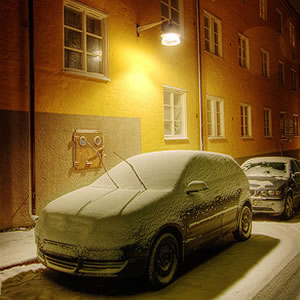- 1 read

Now is the time to get ready for winter. What can you do yourself to save energy? The Maddog will give you easy energy saving tips that cost less.
Most houses lose heat through drafts and through the windows. An energy audit will show where energy is being lost but you can take these simple steps first:
1. Make sure your storm windows are ready for winter: Remove and clean them to let in more light. On refitting, the first window goes at the top, second at the bottom; leave out the screen for extra sunlight and store it for spring. Storm windows cut radiant heat losses in half and reduce drafts.
2. Draft-strip doors and casement windows to keep cold air out. Cold air is the number one cause of heat loss in older homes. However, some air exchange is needed to stop mold growth that can occur if the home is sealed too tightly. A ventilator that recovers the heat from the air sent outside will become necessary. A Heat Recovery Ventilator (HRV) recovers about 60% of ventilation sensible energy and Energy Recovery Ventilation (ERV) recovers about 70% of total energy.* Cost depends on your house size and occupancy.
3. Insulate the attic. Because of high energy costs it is generally economic to install 10 to 12 inches of insulation. Beware of drafts between the pieces of insulation that reduce their effectiveness. The payback from increasing insulation from 4 to 8 inches is generally less than one year! If you have a top floor and don’t need to heat it, close it off with a door and it will act like a huge insulator.
Current building standards lag behind the level of insulation needed for economic payback – especially for windows! This situation will get worse as energy prices rise. If you get the opportunity lobby your representative for the introduction of higher standards.
*Energy in the air comes in two forms: dry and wet, called ‘sensible’ and ‘latent’. In summer on the East Coast latent energy makes up about two-thirds of the total energy (called enthalpy). This makes air conditioners stress out as they can only handle 20% latent load efficiently, not 67%. In winter, the air is much drier and we generally need more moisture in our homes, not less. An ERV helps to stop homes from being dried out in the winter by excess ventilation. You may also need to add humidity to bring it up to 40% relative humidity which is considered the comfort minimum. An HRV does not recover latent energy and therefore is less effective at reducing your energy costs.
Technology Note - New air conditioners currently being designed will remove latent energy much more efficiently. Beware of “dehumidifiers” because they ADD heat at the same time as removing moisture. This will change with the new technology.
If Maddog’s energy saving tips haven’t quite quenched your eco-thirst, then check out GREENandSAVE’s Return on Investment table, as well as their own Energy Saving Tips.

